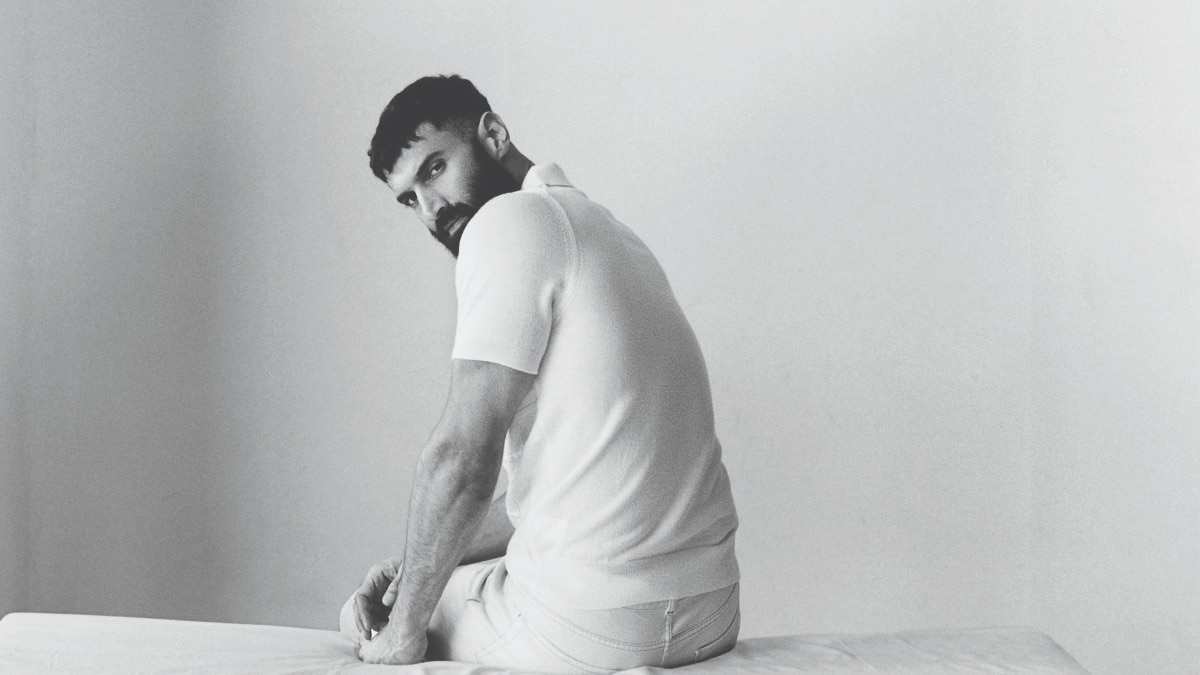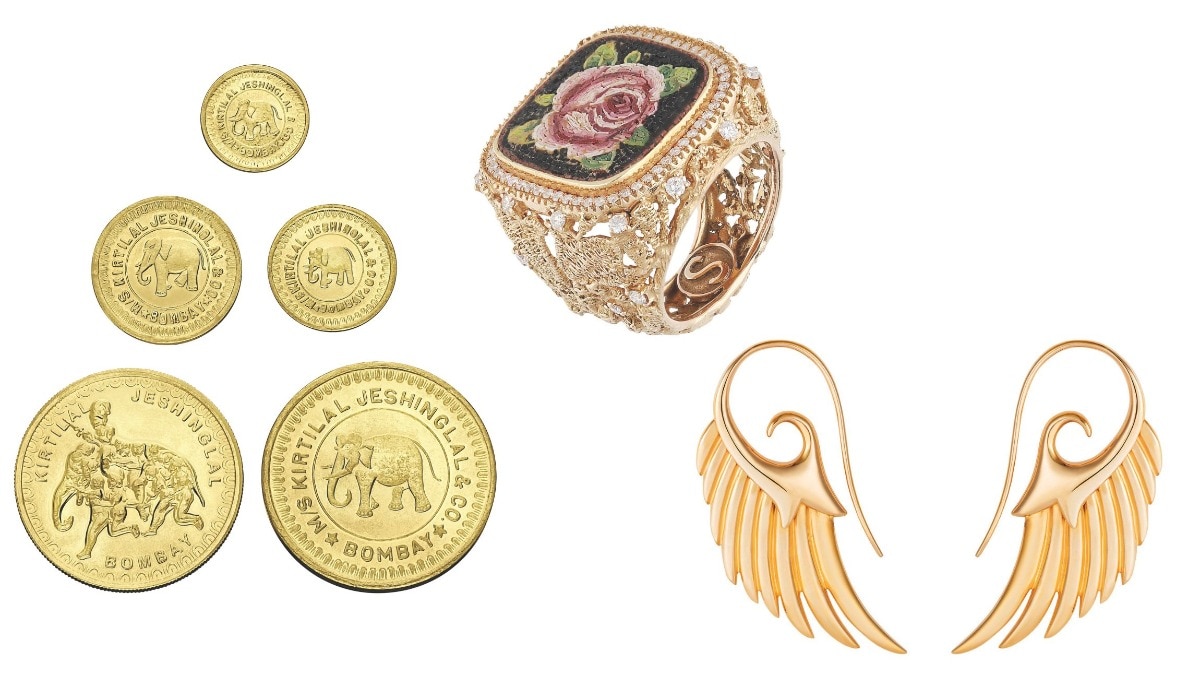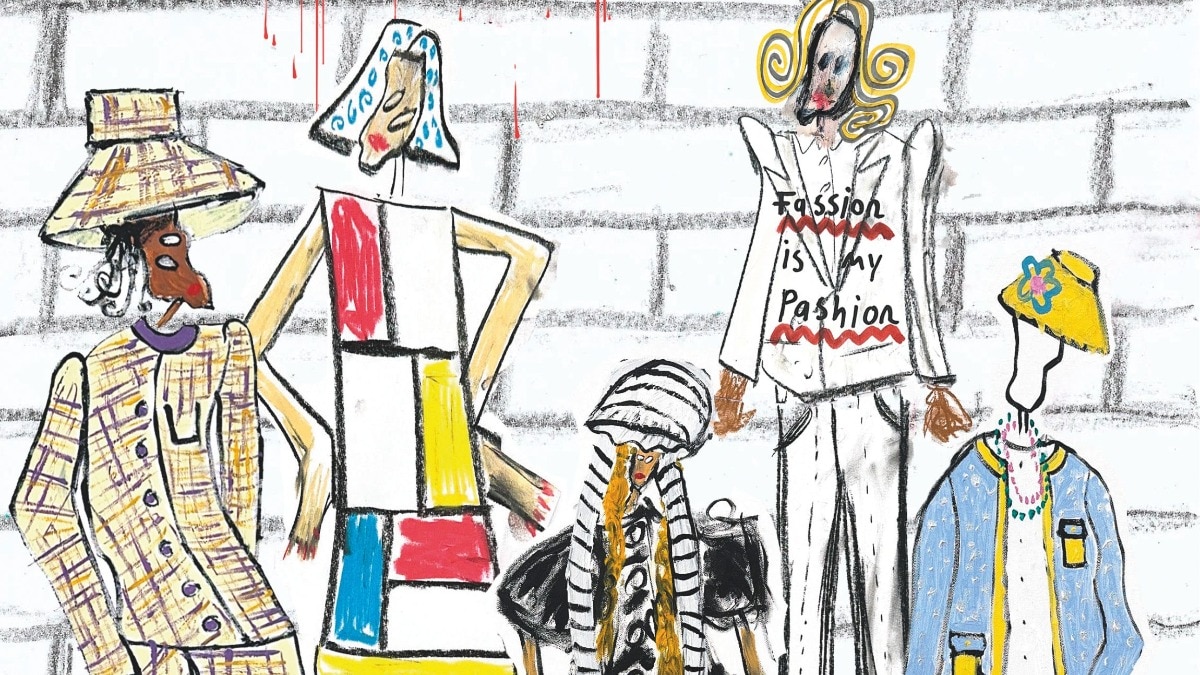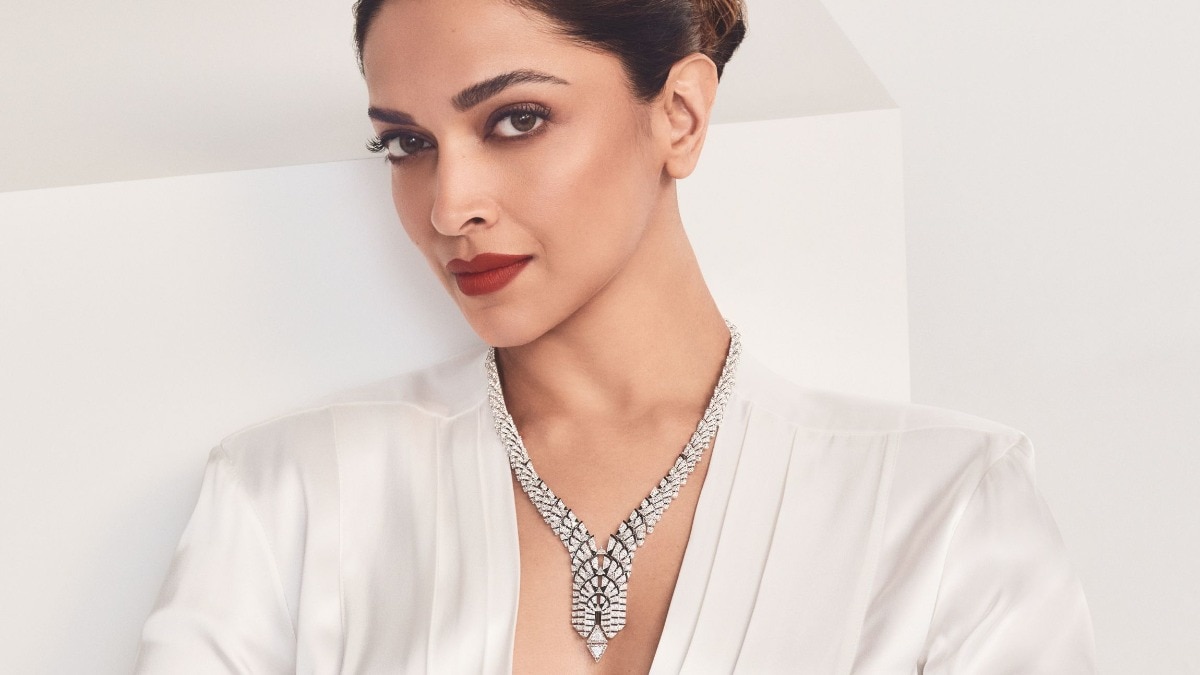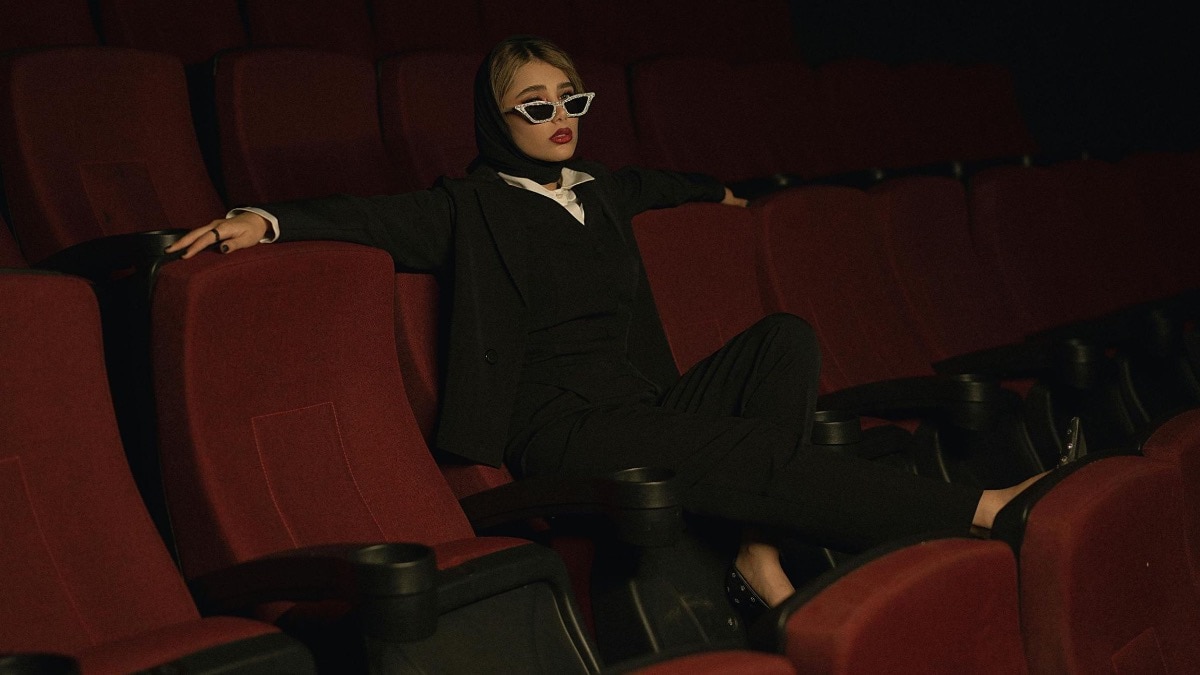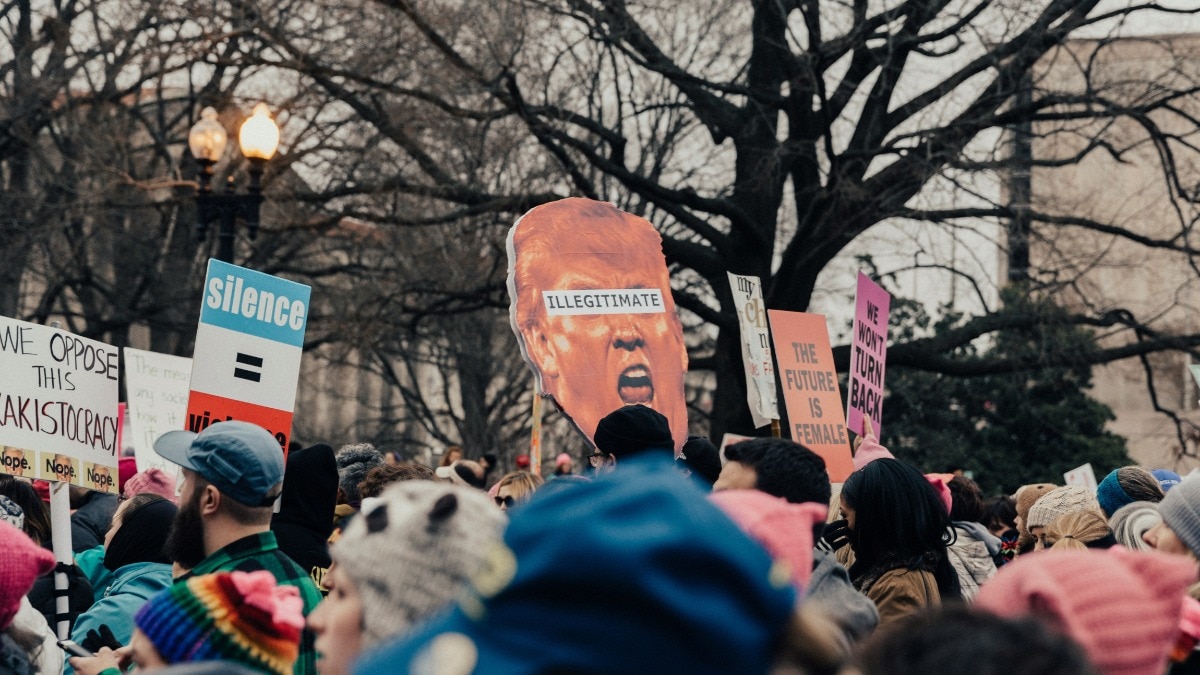
Violet Chachki, our June digital cover star, on inspirations from India, finding pride in art, and her next big project
From winning RuPaul’s Drag Race, and walking runways, to being the first international drag artist to perform in India, Paul Jason Dardo a.k.a Violet Chachki has done it all. The performer talks about their Atlanta roots, undying love for Rekha, and more.


Violet Chachki is a mirage. On a torrid day in Delhi, the drag superstar is a blinding combination of poise and grandeur at the Kiran Nadar Museum of Art. The camera can barely keep up as she slips in and out of Raw Mango, Shivan & Narresh, Bloni, and Rajesh Pratap Singh ensembles. Before you know it, she blends in with the art that surrounds her. From Subodh Gupta’s ‘Orange Thing’ made of brass, steel, and plastic, to Anish Kapoor’s ‘Mirror’, a misty void painted on aluminium, Chachki embodies it all and makes it her own. When Martha Fiennes’ art film Yugen is projected on her, she looks like a mob wife from a Japanese cyberpunk hit. I am barely surprised that she does it all with such ease. Chachki knows exactly what she wants, and how she wants it. She is violently professional, yet horribly fun, on set.

When I sit down with her for this cover story, Chachki is out of drag and back in their new apartment in Los Angeles. It’s a lazy morning and they cuddle with their sphinx cat, Eugene Ziegfeld Chachki, under a baby pink blanket. As someone who’s grown up watching her iconic lipsync to Lucian Piane’s ‘Too Many Daddies’ on RuPaul’s Drag Race, I try my best to keep calm. I show her some pictures from the shoot, and she is quite impressed. “It’s amazing!” she squeals, “The museum with all the art, and the outfits were so gorgeous and modern. I got to get into a lot of Indian fashion that I hadn't experienced before.” Coming to India is always exciting for her, she tells me. And this time was no different. “I feel like I get immersed in such a different culture that feels larger than life. It's almost like escapism for me. I have such an amazing time when I am in the country. And there are so many deities, and gods, and goddesses, and stories, and narratives, and history, and architecture, the craftsmanship, the fashion, the clothes…I mean coming from the United States, it is such a breath of fresh air. I enjoy it so much.”
Born in Atlanta, Georgia, Paul Jason Dardo's artistic journey began with a fashion design dream at the Savannah College of Art and Design. However, the allure of the stage proved stronger, and at 19, Violet Chachki sashayed into the world, with a name inspired by the character played by Jennifer Tilly in the film Bound and the playful Yiddish word "tchotchke," meaning trinket. Chachki's drag is a captivating blend of high fashion and edgy burlesque. Her runways on Drag Race, where she emerged victorious in season seven, were a masterclass in avant-garde aesthetics. Think couture gowns that defy gravity, make-up that pushes the boundaries of beauty, and a fierce sense of confidence that could melt glaciers–not to mention her otherworldly corsets. “Atlanta is very pageant-oriented. It has a historically rich drag scene. Charlie Brown, Lady Bunny, RuPaul…Atlanta was the mecca for drag in the South growing up. A lot of queer people would come to Atlanta because it is one of the big central cities, and a haven for queer people. And with that a haven for the art of drag to prosper. A lot of my experience in drag, and fashion, comes from trans women of colour who dominated the scene in Atlanta.”
But Chachki never thought she’d make it this far from her hometown, to India. “When I first came here, I was limited in my perspective, and a little apprehensive. I didn’t delve into the history, of how the anti-queer laws were a result of centuries of colonisation.” Keshav Suri, founder of Keshav Suri Foundation and the Executive Director at The Lalit Suri Hospitality Group, took it upon himself to tell her about the roots of queerness that India has always been home to. “Keshav is an educator. He taught me so much about the culture before the colonial laws, how they came to be, and how there has to be a fight to push them back. How people in positions of power have not necessarily spoken about this in the past, and how he wants to use his voice, and his platform, to help the community.”

Chachki and Suri forged a friendship rooted in activism, rendered stronger by their love for building safe spaces. “To grow up in a conservative culture, and to decide to fight it–I just have so much respect for that.” On her trip to India where we shot this cover, Chachki visited the Naz Foundation’s LGBTQ+ Centre along with the Keshav Suri Foundation team; the centre is the first of its kind in India. KSF (Keshav Suri Foundation) along with legendary NGOs like Naz provide shelter, food, mental health aid, and employment to queer people and support the art of drag through the Kitty Su and Kitty Ko nightclubs in Mumbai and Delhi. “It’s so cool to witness drag grow and bubble in these places,” Chachki tells me excitedly. And she is right. The drag scene in India is stronger and more creatively diverse than ever, with a plethora of queens making the art form go mainstream. “When I first came to India around 2017, I found most of the drag to be so minimal. But I remember thinking, so many people here must need this outlet, just like I did when I was young. When I came back this time–it had grown so much! In scale, production, ability, and refinement. It has been amazing to witness.”
Along with her many visits to India, Chachki’s own art has evolved too, along with her identity. Dardo, the person behind the meticulously crafted persona, identifies as genderfluid, using both she/her and they/them pronouns. Drag, for Chachki, has become the most powerful tool for self-exploration, with the feminine being the constant point of inspiration. “Strong feminine figures always light a fire in me. May that be my mother, my grandmother, Betty Paige, Dovima, or Dita Von Teese. And illustrations even! Some of my favourite illustrators–Gene Bilbrew, Eric Stanton, and John Willie–are always drawing these empowered women. Sometimes they are dominatrixes, sometimes they are just confident, strong, well-dressed women, and other times they are drag queens. I think that I always look to people who use femininity as a tool, as a weapon, to navigate life and harness power.” Chachki has used femininity to be comfortable in her masculinity, and the art of glamour to figure out where she stands between the two. Someone she’s returned to draw inspiration from is the Bollywood legend Rekha. “The fashion that Rekha wears in Madam X is eternally on my mood board. Rekha is so gorgeous! The way she moves, and the drapes she wears. Even the makeup she puts on is so powerful and sensuous. I am inspired by her all the time, and always in love with her.”

Chachki’s distinct sense of style, and knowledge of global fashion references, have garnered attention from all the right people. She has been a regular at Mugler, Schiaparelli, and Lanvin shows. Even though her modelling career has only been on the rise, she is very serious about seeing herself as an artist first. “I have grown up with Tumblr and stolen magazines from Barnes and Noble. I have gone on to work with models and performers, and there is a difference. I would consider some models as performers in the way that they work. But there are a lot of models who are, unfortunately, coat racks. They are not even interested in the industry they are in. Some models don't even look in the mirror before they go on the runway, they don't even think about what they're doing, and what the theatre of fashion demands.” Chachki is about giving what the designer and their creations need from her, from the right pose to the correct look. “I could never imagine getting dressed in somebody’s art, somebody's work, their brand, and vision, and not thinking–Okay, how does this look best? How should I walk? How should I pose? What emotions does this evoke? I am always approaching things as a performer.”
Through fashion’s trenches, Chachki has carved a niche as a recording artist and content creator. Her music explores a darker, more industrial sound, a sonic counterpoint to the dazzling persona she presents on stage. But she admits that her Spotify is all over the place. “I have so much Bollywood music on there! I have oldies, I have pop, goth, new wave, industrial, a lot of 80s synth, Kim Petras, and there’s even a few country songs. I have Missy Elliot, Ludacris, and Outcast–just the craziest mashup.” Growing up with a drummer dad, Chachki’s love for music spans decades, and her recent foray into DJing reflects it all. Apart from performing to music, just waking up and putting on a song is essential for Chachki’s mental well-being, she tells me. “It can really motivate you, and give you that little push you need to get through the day. Driving through LA, that’s all I do. I get in my car, put on music, and just drive.”
Chachki’s online presence, much like her music, showcases her multifaceted personality–the witty commentator, the artistic muse, and the vigorous advocate for LGBTQ+ rights. With it all, she houses a crystal clear vision of herself and the art that she creates. To communicate that vision with certainty isn’t always easy. “As I have gotten older, I have realised that things aren’t always going to turn out exactly the way you thought they were. You just have to roll with it and see the positives. Okay well, maybe one photoshoot didn't go exactly how I wanted, but maybe I did get a couple of shots that I liked. You have to be okay with that. You have to hop on to the next thing and learn to grow from the last experience. I am learning every day that the only crucial thing is persistence.”

And persisted she has, with her podcast ‘No Gorge’ with fellow drag queen Gottmik, new music releases, and a bunch of gigs in the fashion space lined up. To add to it all is her very prestigious residency at Crazy Horse Paris, starting June 24th. “Crazy Horse is an institution–a Parisian cabaret that’s been around since the 1950s. I am going to be the first male-bodied individual to perform with these historic props, set pieces, and on that stage. These performances–typically by cis-gendered showgirls–were curated for the male gaze. Going in there as a drag queen, and inspiring femmes, women and gay men, non-binary people and trans people: it is really taking something and switching it up.” Through it all one would imagine that she has stuck to a very strict routine, as many successful people are known to do. But Chachki giggles hard when I ask her about it. “Honestly, I don't know if I have ever had a routine. Every day is a winding road! On my notes app, I just have a big list, and I keep editing the title to change the date. Everything is a check box, and I try to get as much checked off as possible.”
A routine might be the last thing on Chachki’s list, but standing up for LGBTQ+ people is up there at the very beginning. When you are queer, you often feel responsible to respond to all the injustice that happens around you. Chachki is no stranger to that. “Sometimes, looking at the realities of things can overwhelm me, and I think that's the case for a lot of people who have the privilege. There still exist countries that offer death sentences for being gay. There is so much fire to put out, and showing up in my most over-the-top, authentic self in public is something that I can do. Just for visibility's sake. I can only hope that my art will inspire others, bring some positive impact, or change a person's mind. And that’s the only way I can approach it and sustain it. It’s my biggest goal.”

One thing is certain, within the raging storm that the world seems to be wrapped up in, Chachki feels like there is magic in finding the courage to create, and see pride in it. “I am dealing with a lot right now, but I have so much ambition, ideas, projects, and visions about how my life should be, how it should look, and how I can push the needle of what drag and queer art can look like. It's hard sometimes. I don't have a husband, I don't have a boyfriend, I don’t have the energy to date, and I have been going through managers and agents–working in show business as a burlesque–fetish–tattooed–crossdresser. It’s like we are at the bottom of a totem pole.” On her bad days, Violet remembers her friend Gottmik’s words: If it was easy to make it, everybody would do it. “It can all be so exhausting. But there are so many amazing elements to pursuing what you want, there is a give-and-take. There is sort of a balancing act there.” And if there is one thing the dancing queen knows how to do splendidly, it’s to balance.
Through this conversation, we often slip into moments of robust shade-throwing, familiar laments, and make jokes that are best kept private. When the alarm rings for them to get ready for their show, we realise we’ve been chatting for hours. While we wrap up, Violet leaves me with a piece of advice: “Don’t ever be afraid to take up space! When we take up space, it is a political act. And being on the cover of Harper’s Bazaar India is an example of that. I mean whether it's sitting front row at fashion shows, attending the Met Gala, or having a Crazy Horse Paris residency–these are spaces that have been traditionally and historically reserved for cis-gender heterosexual people. And when we arrive, what is it if not an act of protest? An act of rebellion?”

Editor: Rasna Bhasin (@rasnabhasin)
Digital Editor: Sonal Ved (@sonalved)
Interview: Jishnu Bandyopadhyay (@jishyouwish)
Styling and Creative Direction: Gopalika Virmani Gurwara (@gopalikavirmani)
Photography: Tarun Kalyani (@tarun_kalyani)
Cover Design: Mandeep Khokhar (@mandy_khokhar19)
Video direction and editing: Pranav Goswamy (@pranavgoswamy)
Videography: Iris Films (@iris.filmss)
Editorial Coordinator: Pooja Singh Verma (@pujaa_singh)
Location: Kiran Nadar Museum of Art (@knmaindia)

